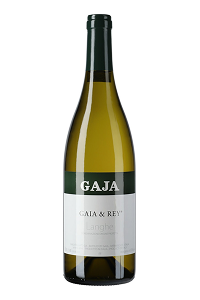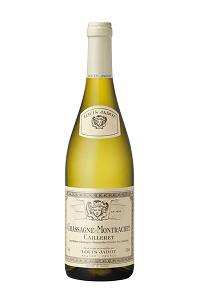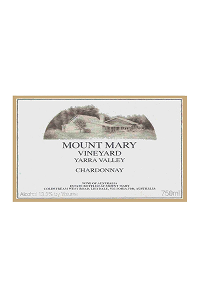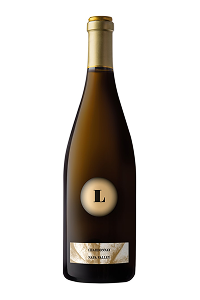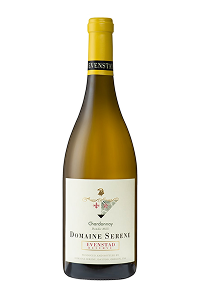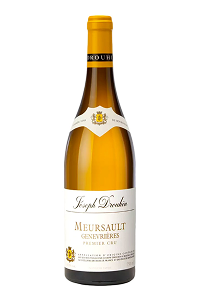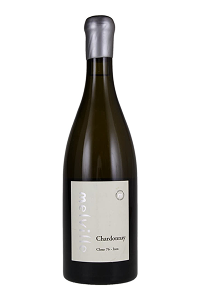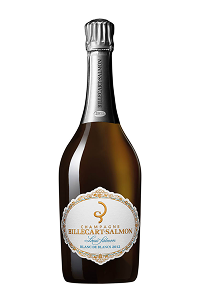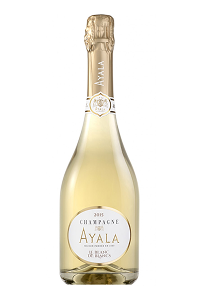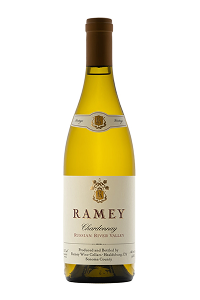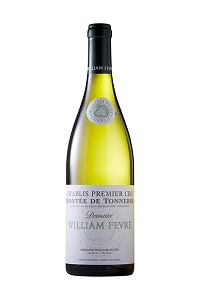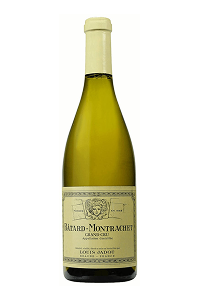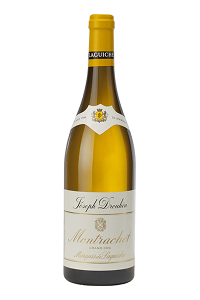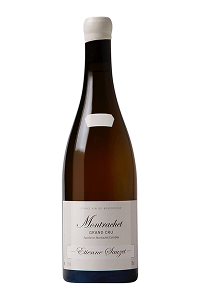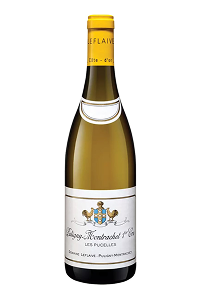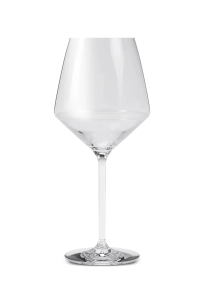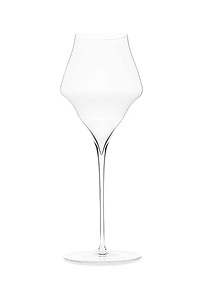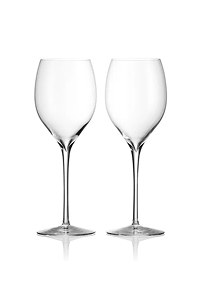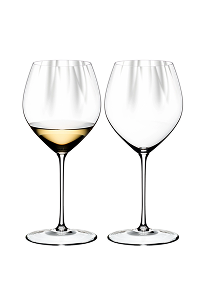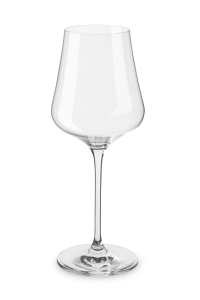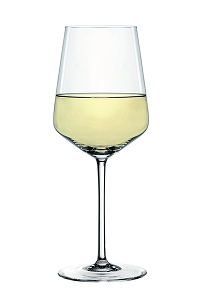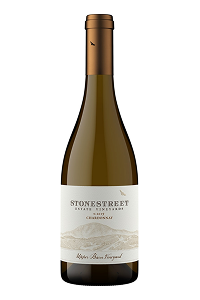10 Best Chardonnay wine of 2025: an insider guide
Chardonnay is a versatile and well loved wine produced worldwide, with climate and winemaking style determining the taste and notes you find in the glass. In this guide, we introduce you to this year’s best Chardonnay wines, key producers and ideal food pairings.
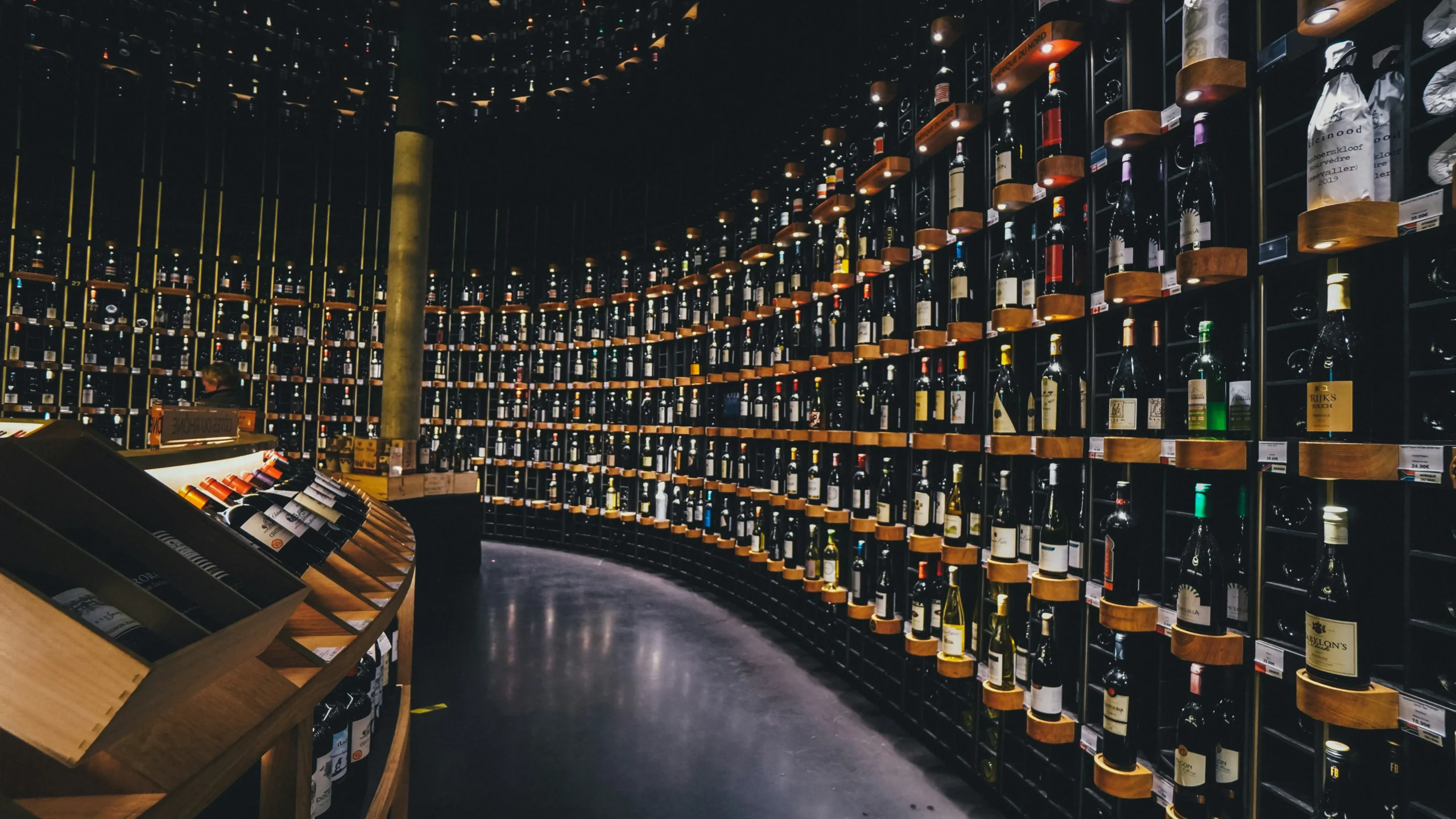
By
Last updated:
Table of Contents
10 Best Chardonnay wine picks
Point Rouge Chardonnay – Peter Michael 2018
Italy
Gaia and Rey Chardonnay – Gaja 2021
Italy
Meursault Goutte d’Or Premier Cru – Domaine Buisson-Charles 2023
France
Three Sisters Vineyard Chardonnay – Marcassin 2009
California
Chassagne-Montrachet Caillerets Premier Cru – Louis Jadot 2022
France
Collezione Privata Chardonnay – Isole e Olena 2022
Italy
Hyde Vineyard Chardonnay – Ramey 2022
California
Chardonnay – Mount Mary Vineyards 2013
Australia
Napa Valley Chardonnay – Lewis Cellars 2022
California
Marchiori Vineyard Bramare Chardonnay – Vina Cobos 2012
Argentina
In the selection above, you’ll find what we consider the 10 best Chardonnay wines selected from different regions and winemaking methods. We have handpicked creamy oaked and fresh unoaked expressions so that you can experience how dramatically Chardonnay changes depending on the winemaking technique. Read on to explore the unique characteristics of each style.
Chardonnay white wine at a glance
| Attribute | Details |
|---|---|
| Grape Variety | 100% Chardonnay |
| Origin | Burgundy, France. Now grown worldwide especially by winemakers in California, Italy, England, New Zealand and Australia. |
| Serving Temperature | Unoaked: 45-50°F (7-10°C) Oaked: 50-55°F (10-13°C) |
| Decanting | Usually not necessary but aged oaked Chardonnay can benefit from brief decanting or aeration for 30 to 60 minutes. |
| Aging Potential | Best enjoyed young but complex styles can age 5 to 20+ years. |
| Flavor Profile | Lemon, apple, peach, vanilla bean. Flavors of butter, coconut and toast are added with oak aging. |
| Structure | Medium to high acidity, little to no tannins, body ranges from light to full, depending on aging. |
| Alcohol Content | Ranges from 12% to 15% |
| Ideal Glass | Universal white wine glass, aroma collector glass for oaked expressions. |
| Food Pairing | Baked chicken breast, soft cheeses, risotto, pork tenderloin, seafood. |
| Top Regions | Burgundy (France), Chablis (France), California (USA), Oregon (USA), (Marlborough) New Zealand, Italy, South Africa, Australia. |
| Notable Producers | Albert Bichot (France), Domaine Serene (France), Jean-Marc Brocard (France), Joseph Drouhin (France), Marcassin (California), Vincent Dauvissat (France). |
Chardonnay white wine’s taste profile is extremely versatile due to the range of winemaking techniques and regional differences, resulting in some Chardonnays being crisp and unoaked (mainly produced in cool climates like French Chablis) and some others in full bodied, buttery and oaked types (produced in moderate climate regions such as California).
Regardless of the climate, here is what you can generally expect from a glass of Chardonnay white wine:
- Fruit flavors of lemon, apple, pineapple, pear, berries and citrus.
- Acidity that ranges from medium for unoaked versions to high for oaked versions.
- A relatively dry taste although its fruity nature and oak aging can create a sense of sweetness.
What is Chardonnay wine and how is it made?
Chardonnay wine is a dry white wine produced from the similarly named green skinned grape variety all over the world. The grape itself is neutral and it can take on different personalities depending on the terroir and winemaking technique. There are two major ways of vinifying Chardonnays, namely the oaked and unoaked methods.
Let’s have a look at how Chardonnay wine is made:
- Grapes are handpicked at different levels of ripening, according to the style of wine: earlier for fresher and high acidic Chardonnay and later for richer and fuller styles.
- Most Chardonnay producers destem the grapes before pressing in order to remove unwanted bitterness, but others choose to press whole clusters (stems + grapes) to obtain a clearer juice with lower phenolics (often in high quality productions in Burgundy or Champagne).
- Pressing is the next step and is crucial in separating the clear juice from the solids (grape skins and seeds). The juice is separated quickly from the skins to avoid the release of too much color or tannins.
- Fermentation can happen in stainless steel tanks (for lean and mineral Chardonnay styles) or in oak barrels to add complexity. Winemakers may choose to use cultured yeasts for a controlled result or rely on wild or native yeasts to guide a more spontaneous fermentation.
- Oaked Chardonnay often undergoes full malolactic fermentation (MLF) adding buttery and creamy notes to the wine. Unoaked Chardonnay usually blocks or limits MLF to keep freshness and citrusy acidity.
- Lees stirring or bâtonage (only for oaked versions): winemakers perform a stirring of dead yeast cells to add body and nutty brioche aromas increasing the creamy mouthfeel of the wine.
- Aging: unoaked Chardonnay ages briefly in stainless steel or other neutral tanks to keep a crisp and clean profile; oaked Chardonnay matures from 6 to 18+ months in oak barrels (French or American) to add vanilla, spice and brioche flavors.
- After aging Chardonnay wine goes through fining and filtration, a process needed to remove unwanted particles that could make the wine cloudy or unstable (for example proteins or dead yeast).
- Bottling of the wine is done shortly after it has been clarified and filtered. Tiny amounts of sulfites are added to protect against oxidation and spoilage.
Chardonnay is typically consumed young but oak aging and standout vintages can extend the bottle aging potential up to 20 years.
| Stage | Unoaked Chardonnay | Oaked Chardonnay |
|---|---|---|
| Fermentation | Stainless steel or concrete (neutral, cool temps) | Often in oak barrels (can also start in tank, then move to oak) |
| Malolactic Fermentation (MLF) | Usually blocked or partial, keeps acidity crisp | Almost always allowed, gives buttery, creamy texture |
| Aging Vessel | Neutral (steel, concrete, large old vats) | Oak barrels (French = subtle, American = bold) |
| Lees Contact (Bâtonnage) | Minimal or none | Common, stirred to add creaminess and nutty notes |
| Aging Time | Short (months, not years) | Longer (6–18 months, sometimes more) |
| Flavor Profile | Crisp, clean, fruity (apple, pear, lemon, mineral) | Rich, full bodied, layered (peach, mango, butter, vanilla, toast) |
| Style Examples | Chablis (France), cool climate New World styles | Burgundy (Côte de Beaune), California, Australia |
Oaked vs unoaked Chardonnay and other Chardonnay styles
There are three distinct styles of Chardonnay wine, each with a unique taste profile and structure. They are a result of different winemaking choices (oaked vs unoaked Chardonnay or sparkling), which influence the wine’s final character and texture.
- Oaked Chardonnay is rich, buttery and full bodied, characteristic of the wines produced using malolactic fermentation and lees stirring to add roundness and depth. Oaked Chardonnay is mostly produced in warmer climates where grapes achieve fuller ripeness such as California’s Sonoma County, Chile’s Casablanca Valley and some parts of Italy.
- Unoaked Chardonnay is more mineral, citrusy and floral. Here the winemakers highlight the grape’s natural brightness, preserving a leaner profile and mineral notes through fermentation in stainless steel tanks. These wines are often produced in cooler climates such as Chablis, the Loire Valley or Coastal New Zealand.
- Sparkling Chardonnay is made from grapes that are picked a bit earlier to retain higher acidity, which is essential for the freshness and longevity of sparkling production. The most famous examples of sparkling wines made with Chardonnay grapes are Champagne, Franciacorta (Italy) and other sparkling productions from California and England. Champagne wine styles made entirely from 100% Chardonnay grapes (i.e. not blended with other varieties) are called Blanc de Blancs.
| Style | Flavor Profile | Texture & Structure | Main Regions |
|---|---|---|---|
| Oaked Chardonnay | Ripe stone fruit (peach, apricot), tropical fruit (pineapple, mango), vanilla, butter, brioche | Full bodied, creamy, often buttery with a long finish | Sonoma County (California), Napa Valley, Chile (Casablanca, Limarí), Northern Italy, Australia (Margaret River) |
| Unoaked Chardonnay | Green apple, pear, citrus (lemon, lime), floral hints, mineral/steely notes | Light to medium bodied; crisp, fresh, zesty acidity | Chablis, Loire Valley, coastal New Zealand, Oregon, South Africa (Elgin, Hemel-en-Aarde) |
| Sparkling Chardonnay (Blanc de Blancs) | Citrus zest, green apple, white flowers, brioche, almond and honey with lees aging | Lively mousse, high acidity, elegant and structured, age worthy | Champagne (France), Franciacorta (Italy), England (Sussex, Kent), California (Carneros, Sonoma Coast) |
Best oaked Chardonnay wines to delight your palate
Creamy and buttery, oaked Chardonnay is a complex white wine that pairs effortlessly with equally rich and creamy dishes such as chicken pot pie or creamy pasta. It is a cherished favorite among wine lovers worldwide, commonly produced by winemakers in Europe, California and other moderate climates. See our recommendation for the best oaked Chardonnay wines together with their tasting notes and vintage years.
Puligny-Montrachet 2023 – Faiveley – France
Evenstad Reserve Chardonnay 2022 – Domaine Serene
Chardonnay 2023 – Cakebread Cellars – California
The best unoaked Chardonnay wines according to Wines Curated
Unoaked Chardonnay is often misunderstood as “simpler” than its oaked counterpart but in truth it’s one of the purest expressions of the grape. If what you prefer is a white wine with pure mineral, floral flavors and incredibly food friendly, here are our recommendations for what we consider to be some of the best unoaked Chardonnay wines:
Meursault Genevrieres Premier Cru 2022 – Joseph Drouhin – France
Chablis Les Clos Grand Cru 2023 – Jean-Marc Brocard – France
Clone 76 Inox Chardonnay 2024 – Melville – California
Blanc de Blancs and other sparkling Chardonnay wines
Sparkling Chardonnay wine, also known as Blanc de Blancs if made entirely of Chardonnay grapes, is crafted by subjecting the already made wine to a second fermentation in wine bottles. This second fermentation creates a delicate and elegant stream of bubbles in the wine with taste profile varying widely depending on whether the wine was in stainless steel or oak barrels before being bottled. Wine aged in stainless steel emphasizes crisp citrus, green apple and floral notes while those matured in oak barrels gain a creamy and brioche like complexity. Check out 3 sparkling Chardonnay wines that we consider outstanding:
Louis Salmon Blanc de Blancs 2012 – Billecart-Salmon – France
Extra Brut Les Genettes Chardonnay 2016 – Champagne Eric Rodez – France
Le Blanc de Blancs A/18 Extra Brut 2018 – Champagne Ayala – France
This versatility makes sparkling Chardonnay wines a favorite among wine lovers, pairing beautifully with elegant cuisine of seafood and caviar or simply as a celebratory drink on its own.
Chardonnay wine price explained: what is the cost of a bottle?
Chardonnay wine prices cover a wide range from affordably priced bottles to luxury expressions worth thousands of dollars. These numbers are determined by a very variegated mix of factors, including:
- The terroir and specific location where the grapes are grown, as certain appellations like Chablis AOC are renowned for higher quality wines.
- The vintage year also determines the quality of the grapes as wines produced from exceptional vintage years have impressive aging potential and may cost more.
- The winemaking method also influences the price tag attached to the bottle of Chardonnay wine (oaked versions or Blanc de Blancs result in higher production costs due to high cost of barrels, labor intensive vinification and aging time).
- High quality Chardonnays brands with limited productions and a reputation for excellence usually come with a higher price tag.
Here is a table with some Chardonnay wine recommendations for various price brackets, their expert ratings and tasting notes.
1. Entry Level Chardonnay: Ramey Russian River Chardonnay 2023, ABV 13.5%
2. Mid Tier Chardonnay: William Fevre Chablis Montee de Tonnerre Premier Cru 2022, ABV 12.5%
3. Single Vineyard: Bâtard-Montrachet Grand Cru 2022 – Louis Jadot, ABV 14%
4. Prestige Collector Bottles: Montrachet Marquis de Laguiche Grand Cru 2022 – Joseph Drouhin, ABV 14%
Most expensive Chardonnay bottles worth collecting
Chardonnay might be a globally loved wine but only a handful of bottles achieve a “collectible” status. For seasoned collectors, collectible Chardonnay bottles represent a statement of provenance, rarity and long term investment. At a 2023 Sotheby’s auction, a 9 liter case of 2007 Leroy Domaine d’Auvenay Chevalier-Montrachet took the world by storm when it was auctioned off for a little more than $240,000. The sale, made by renowned wine and art collector Pierre Chen, highlighted Chen’s reputation as one of the world’s foremost collectors but also underscored the rising stature of Chardonnay in the collectors’ market. While Burgundy’s Pinot Noirs (particularly from Domaine de la Romanée-Conti) have traditionally dominated the auction stage, this record reinforced that white Burgundy can command equal prestige.
What makes Chardonnay wine worth collecting?
- Limited releases from reputable brands.
- Elite single vineyard expressions crafted with utmost care.
- Oaked styles with exceptional aging potential.
Here are our recommendations for the most expensive Chardonnay wine bottles worth adding to your collection:
Corton-Charlemagne Grand Cru 2016 – Domaine Coche-Dury – France
Corton-Charlemagne Grand Cru 2020 – Domaine de la Romanée-Conti – France
Montrachet Grand Cru 2022 – Domaine Etienne Sauzet – France
Chevalier Montrachet Grand Cru 2020 – Domaine Jean-Claude Ramonet – France
Puligny-Montrachet Les Pucelles Premier Cru 2022 – Domaine Leflaive – France
Best Chardonnay wine vintage years
The best Chardonnay vintage years vary by region due to their widespread cultivation. The wine’s primary taste profile is deeply influenced by terroir and climate, so each vintage is different depending on local conditions. Here are some great vintage years for Chardonnay wine and why experts consider them to be special:
| Vintage | Best Chardonnay Wine | Vintage Characteristics |
|---|---|---|
| 2023 | Chardonnay 2023 – Far Niente – California | An excellent vintage in California’s Sonoma County resulting in highly aromatic wines, balanced acidity and freshness. |
| 2019 | Chablis Valmur Grand Cru 2019 – J. Moreau & Fils – France | Wines with deep spice and fruit flavors resulting from warmer weather, a perfect year in Chablis. |
| 2017 | Chardonnay 2017 – Legacy – France | Wines from this vintage show well balanced flavors and acidity with exceptional aging potential. |
| 2013 | Chablis Vaillon Premier Cru 2013 – Daniel-Etienne Defaix – France | A standout vintage with generous wines that display great depth of structure. |
| 1997 | Bourgogne Blanc 1997 – Maison Leroy – France | Excellent harvest quality, mature fruits with enough hang time for flavor development. |
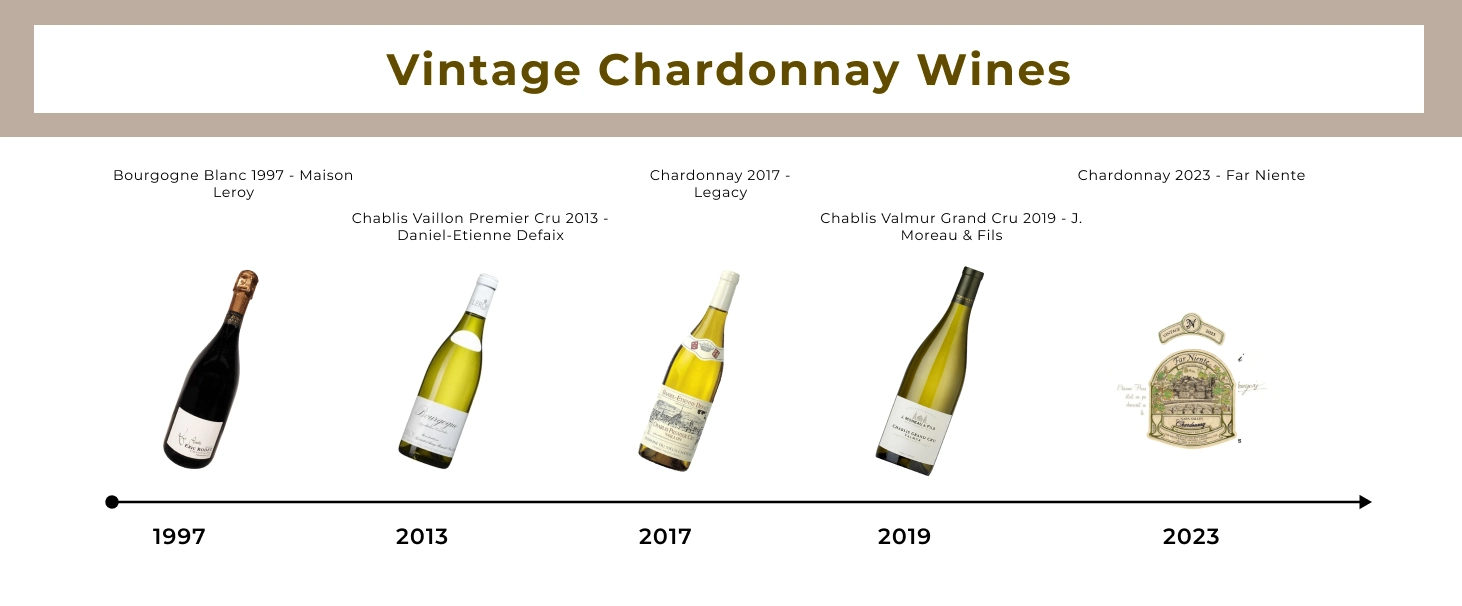
3 Smart tips to enjoy the Chardonnay white wines as a beginner
Even the best Chardonnay wines are beginner friendly thanks to their refreshing taste. If you are someone who is just discovering Chardonnay wines, the first and most important tip is to understand its different styles and find which one you prefer.
Here are three additional tips to enjoy Chardonnay white wines like a pro:
- Start with both oaked and unoaked styles. Comparing the two will help you understand the grape’s incredible variety.
- Select bottles that are under 5 years old at first adding more aged versions once you understand the flavors.
- Choose the right food pairings: think light seafood dishes for unoaked Chardonnay and richer creamy pasta for oaked versions.
- Serve at the right temperature: oaked Chardonnay should be slightly chilled, between 50-55°F and unoaked Chardonnay slightly warmer, between 45-50°F.
Here are two bottles to ease you into the world of Chardonnay as a beginner:
| Chardonnay Style | Our Recommendation | Best to Pair with |
|---|---|---|
| Young Chardonnay (under 5 yrs) | Secret de Famille Chardonnay 2021 – Albert Bichot – France | Poached chicken with lemon butter sauce, salmon carpaccio, white bean soup. |
| Mature Chardonnay (5-10+ yrs) | St-Aubin Les Charmois Premier Cru 2015 – Marc Colin – France | Halibut with brown butter, fried chicken, creamy pasta primavera. |
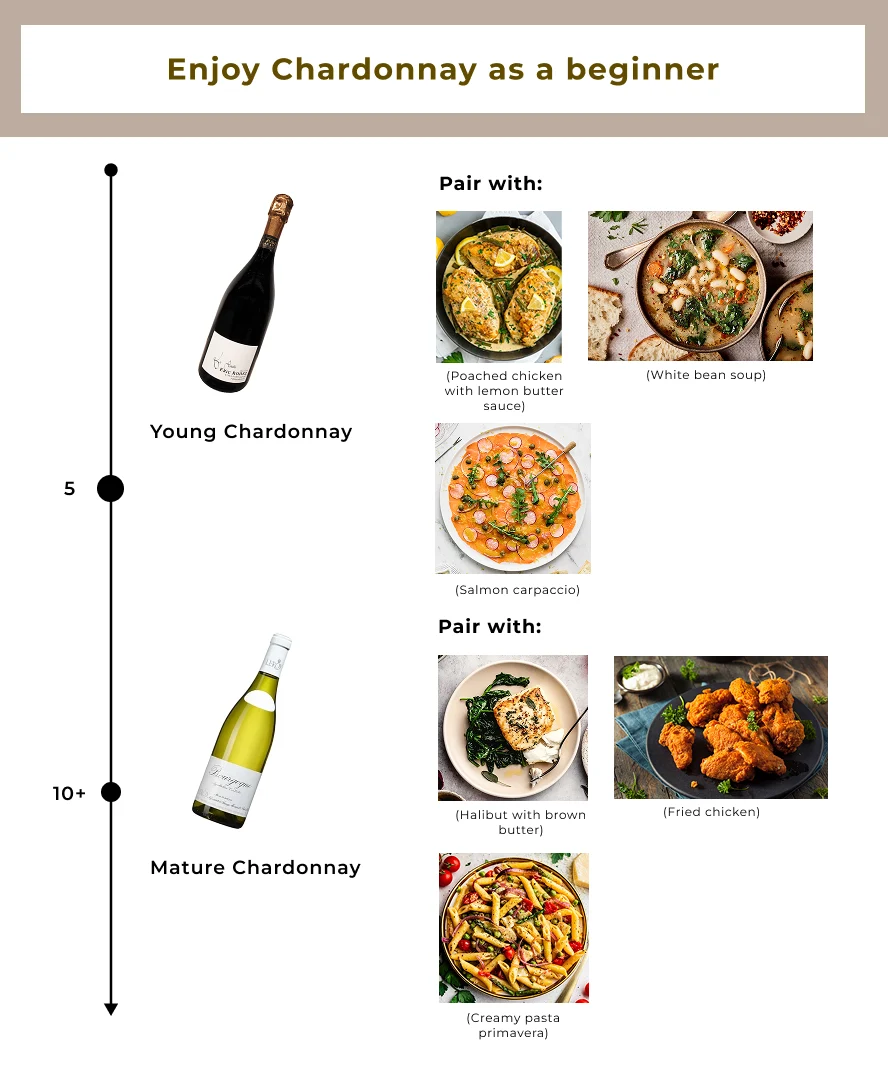
Chardonnay wine glass guide: unlock the perfect flavor
The right Chardonnay wine glasses are crucial to serving and savoring the wine at its best as the shape of the glass significantly influences how the wine tastes and feels. The choice will depend much on the wine’s style. For oaked versions, a glass with a large, rounded bowl is perfect for enhancing texture and flavor, highlighting complex aromas of vanilla, butter and ripe fruits. Mineral driven unoaked expressions benefit from narrow white wine glasses that can preserve their acidity and crispness. To enjoy sparkling Chardonnay and Blanc de Blancs, serve in a Champagne coupe to better appreciate the wine’s delicate aroma and flavors or in a flute to showcase the bubbles and keep them from escaping.
Here is a guide to the best high end Chardonnay wine glasses for every style, conveniently available on Amazon:
EVA SOLO – Legio Nova wine glass set (set of 6)
Josephinenhütte – JOSEPHINE No 4 – Handmade Champagne glasses – Set of 6
Waterford Elegance Chardonnay Glasses (Set of 2)
RIEDEL Performance Chardonnay
Gabriel Glas – StandArt Crystal Wine Glasses (Set of 2)
Spiegelau Vino Grande White Wine Glasses (Set of 4)
France: the hometown of the best Chardonnay wines
Chardonnay grapes grow in vineyards worldwide but they originated from Burgundy, France. France sets the global standard for this wine type, with the best Chardonnay wine bottles on the international market almost always coming from its vineyards.
French Chardonnay wines are produced in:
Good to know: AOC (Appellation d’Origine Contrôlée) is an official certification system in France that protects and defines the origin and quality of wines. It sets strict rules on where the grapes are grown, which varieties can be used and how the wine is made. For example, a wine labeled Chablis AOC must come from the Chablis region and be made from 100% Chardonnay following specific winemaking regulations.
The best Chardonnay wine from US: California vineyards
Despite several US wine regions cultivating the grape, the best Chardonnay wines produced in the US come from California. The Chardonnay grapes thrive in its warmer climates and the wine style here is noticeably different from that in France. Californian winemakers make conscious decisions (such as stainless steel vs. oak, blocking or encouraging malolactic fermentation, extended lees aging or not) to tailor wines from lean and mineral to rich and opulent.
Sonoma County is often regarded as the cradle of fine California Chardonnay. The Russian River Valley and Sonoma Coast are cooled by Pacific fog, slowing ripening and preserving acidity. Wines here tend to be reminiscent of Burgundy in terms of texture and aroma.
Napa Valley offers a warmer environment yielding Chardonnays that are rounder, fuller bodied and often more tropical in taste profile. Napa Valley Chardonnay tends to be richer and more immediate, though some estates balance power with restraint by sourcing grapes from higher altitude sites such as Mount Veeder.
Santa Barbara County has emerged as one of the most exciting Chardonnay regions thanks to its transverse valleys that funnel cool Pacific air inland. Many producers here experiment with minimal oak or partial malolactic fermentation giving wines a taut and structured profile.
Upper Barn Vineyard Chardonnay 2019 – Stonestreet – California
Chardonnay is also widely cultivated in other US states including New York, Texas and Oregon, among others. The Dijon clones, introduced in Oregon in the ‘80s, are now popular and used in Chardonnay wines that present better acidity and balance.
💡 Fun fact: Dijon clones are special selections of Chardonnay vines originally from Burgundy (France) chosen for their ability to ripen evenly and produce wines with great balance and finesse. Today, they’re the backbone of many top Oregon Chardonnays where their precision and acidity shine in the cooler climate.
Chardonnay vs Chablis vs Sauvignon Blanc vs Pinot Grigio
Chardonnay, in all of its variegated forms and expressions, is often compared to other great white wines. Let’s have a look at some of the white wines and see how similar or different they are to Chardonnay:
- Chardonnay vs Chablis: while technically Chardonnay and Chablis come from the same grape, when made in the specific AOC appellation of Chablis, the wines result in leaner, more mineral driven and purer styles.
- Chardonnay vs Sauvignon Blanc: Sauvignon is naturally higher in acidity with citrus and herbal notes that resemble much unoaked Chardonnay styles. Despite this resemblance, Sauvignon Blanc is sharper and more linear while Chardonnay offers more textural depth and greater adaptability to oak aging.
- Chardonnay vs Pinot Grigio: Pinot Grigion a light bodied, crisp and dry Italian wine, it is known for its refreshing acidity and hints of minerality. Chardonnay can resemble Pinot Grigio in some of its expressions but is far more versatile, capable of achieving richer and fuller expressions with aging.
Below are some of our favorite white wines comparable to Chardonnay, an overview of their taste structures and prime bottles to pair with your next meal.
| Wine / Grape | Top Wine | Wine Style |
|---|---|---|
| Chablis | William Fevre Chablis Vaulorent Premier Cru 2022 | Dry, light bodied and mineral, crisp flavors of citrus and pear are typical |
| Sauvignon Blanc | Lail Blueprint Sauvignon Blanc 2023 | Dry and highly acidic, with characteristic herbaceous and tropical fruit notes |
| Pinot Grigio | Vie di Romans Dessimis Pinot Grigio 2022 | Light bodied, high acidity and minerality with flavors of ripe apple and pear |
How to serve Chardonnay white wine
The key to serving Chardonnay white wine like a pro is to understand the wine style. Once you can tell if it’s oaked or unoaked, then you can enjoy it to the fullest. Here are some helpful tips:
- Serve oaked Chardonnay between 50-55°F and unoaked Chardonnay between 45-50°F.
- Use the appropriate wine glass to enhance its flavor and rich profile (refer to our glass guide above).
- Decanting is not always necessary but oaked versions can benefit from brief aeration from 30 to 60 minutes.
Food pairing essentials for the perfect Chardonnay wines
While there are no strict rules to pairing Chardonnay wine, as taste preferences are personal, generally oaked versions are perfect for rich dishes while lighter styles go down easy with seafood and lighter foods. Below we have come up with a few Chardonnay wine pairing suggestions to enjoy this great wine at its best.
| Food | Best Chardonnay Wine | Aged | Type & Structure |
|---|---|---|---|
| Baked chicken breast with tarragon, roast pork, and poached turkey breast | Seven Springs Vineyards Summum Chardonnay 2022 – Evening Land Vineyards – California | 1-2 years ABV 13% |
Medium bodied palate with a gentle creaminess, bright acidity and a mineral finish |
| Pan seared scallops, lobster, sushi, oysters | Chablis Montmains Premier Cru 2020 – Jean et Sébastien Dauvissat – France | 1-2 years ABV 14.99% |
Pretty and ripe aromas including citrus confit, sea breeze and iodine |
| Butternut squash risotto, fettuccine Alfredo, gnocchi with brown butter | Russian River Chardonnay 2022 – Paul Hobbs – California | 1-2 years ABV 14.3% |
Delicate wine, with bright aromas of fresh citrus peel, apple and Asian pear |
| Goat cheese and mild cheeses such as Brie, Fontina and Ricotta | Pouilly-Fuissé Le Clos 2020 – Château Fuissé – France | 1-3 years ABV 13.5% |
Ripe flavors of vanilla, butterscotch, peach and toasty oak |
| Green peas, white beans, Zucchini | Corton-Charlemagne Grand Cru 2021 – Joseph Drouhin – France | 1-3 years ABV 13.5% |
Well-balanced on the palate, notes of fresh almond, citrus, spices and honey |
FAQs Best Chardonnay wine
Should Chardonnay wine be chilled?
Yes, Chardonnay wine can be served slightly chilled before drinking. The average temperature for serving oaked Chardonnay is somewhere between 50-55°F while creamy unoaked Chardonnay styles may be served slightly warmer between 45-50°F. A quick pop in your wine cooler or fridge is enough to enhance the aromatics and flavor profile of Chardonnay.
What kind of wine glasses should you use for Chardonnay?
The appropriate wine glasses for Chardonnay vary for each style. A narrow, universal white wine glass can be used to serve crisp and unoaked versions, as its flute like body will enhance the young wine flavors. On the other hand, a Burgundy style wine glass is ideal for enjoying the richer texture of an oaked Chardonnay. Sparkling Chardonnays and Blanc de Blancs can benefit from wider style flutes that preserve their bubbles or rounded coupes that allow optimum appreciation of delicate flavors.
What is the best Chardonnay wine?
The best Chardonnay wine for each person is different, depending on their taste and style preferences. You can check out our top 10 expert rated wine bottles, including both oaked and unoaked expressions. Peter Michael Point Rouge Chardonnay 2018 and Gaja Gaia and Rey Chardonnay 2021 are the prime expressions of Chardonnay that made it to the top of our list, both of them representing the finest wines from their respective terroirs.
What are Chardonnay wine prices?
Due to its status as a widely coveted wine that is produced in different regions globally, the Chardonnay wine prices can range from less than $100 to steep thousands. Factors influencing the price of a bottle include the terroir, winemaker’s reputation and aging techniques. Some highly collectible bottles have been sold at auctions for price tags as high as $200,000.
Is Chardonnay wine produced in France?
Yes, Chardonnay wine is produced in France, as well as in Italy, California, Oregon, Australia, South Africa, New Zealand and other vineyards worldwide. It is an easy to cultivate grape with a taste profile that takes on the nature of the terroir and climate where it was grown.
How long does Chardonnay last once open in the fridge?
Once open in the fridge, a bottle of Chardonnay can last for 3 to 5 days. To make sure that your wine maintains its freshness and zippy acidity, replace the cork after serving the drink and store it standing vertically so that the drink doesn’t spill.
Is Chardonnay a white wine that is dry?
Yes, Chardonnay is a white wine and it is dry. It is produced from green skinned grapes of the same variety. The wine taste profile and structure can range from oaked, rich and full bodied to crisp, mineral driven styles that were fermented in stainless steel vats. Common tasting notes are floral, citrus and white fruits.
What is Chardonnay’s alcohol content?
Chardonnay’s alcohol content typically ranges between 12 % to 15%, with oaked versions falling in the upper ranges. The process of oak aging softens the wine’s acidity as more oxygen passes through and this ensures that the richer, creamier Chardonnays have less acidity than the more mineral styles.
What are the best Chardonnay wine brands?
The best Chardonnay wine brands include Albert Bichot (France), Domaine Serene (France), Jean-Marc Brocard (France), Joseph Drouhin (France), Marcassin (California) and Vincent Dauvissat (France). These brands are renowned worldwide for their commitment to producing high quality Chardonnay in various styles.

